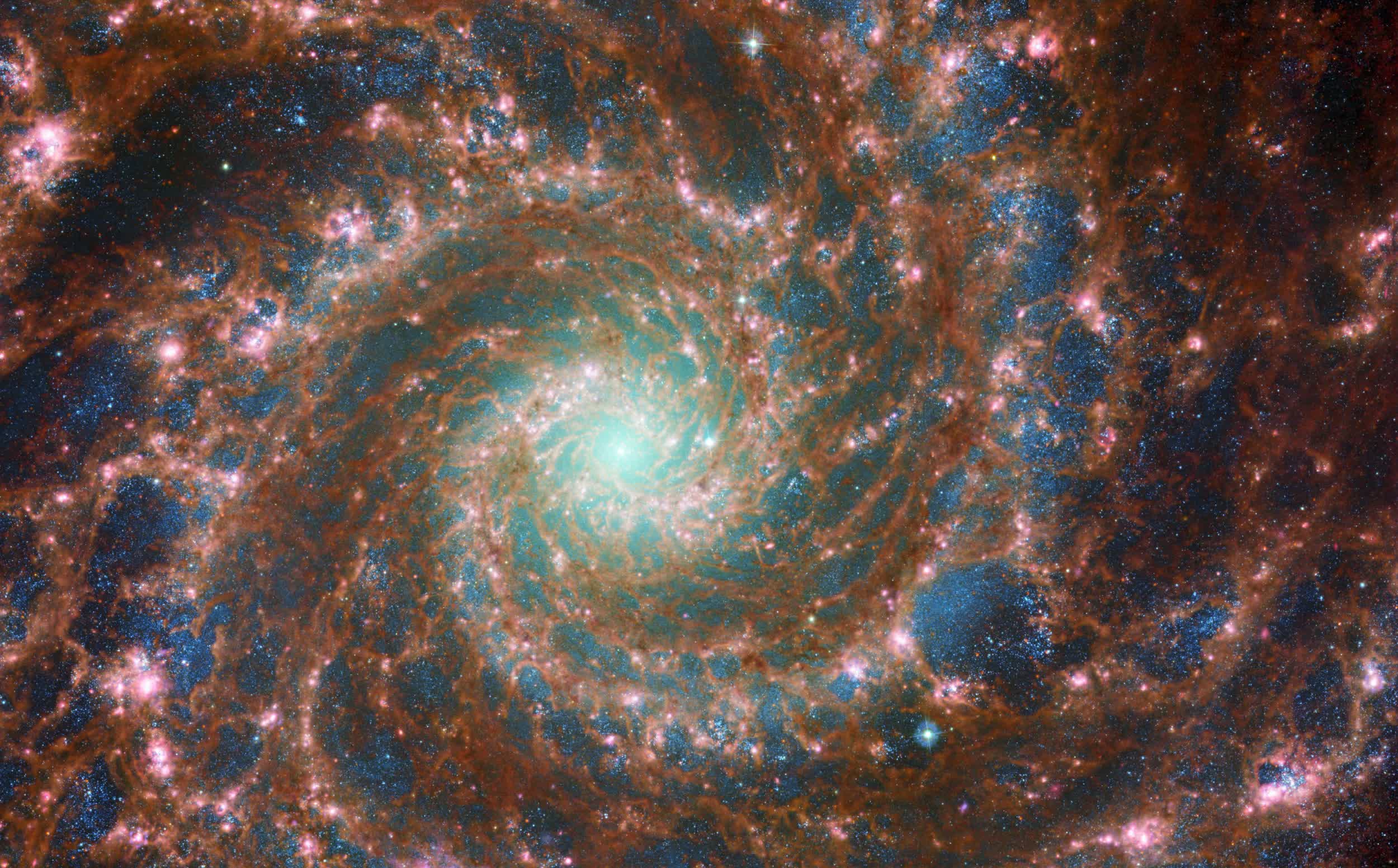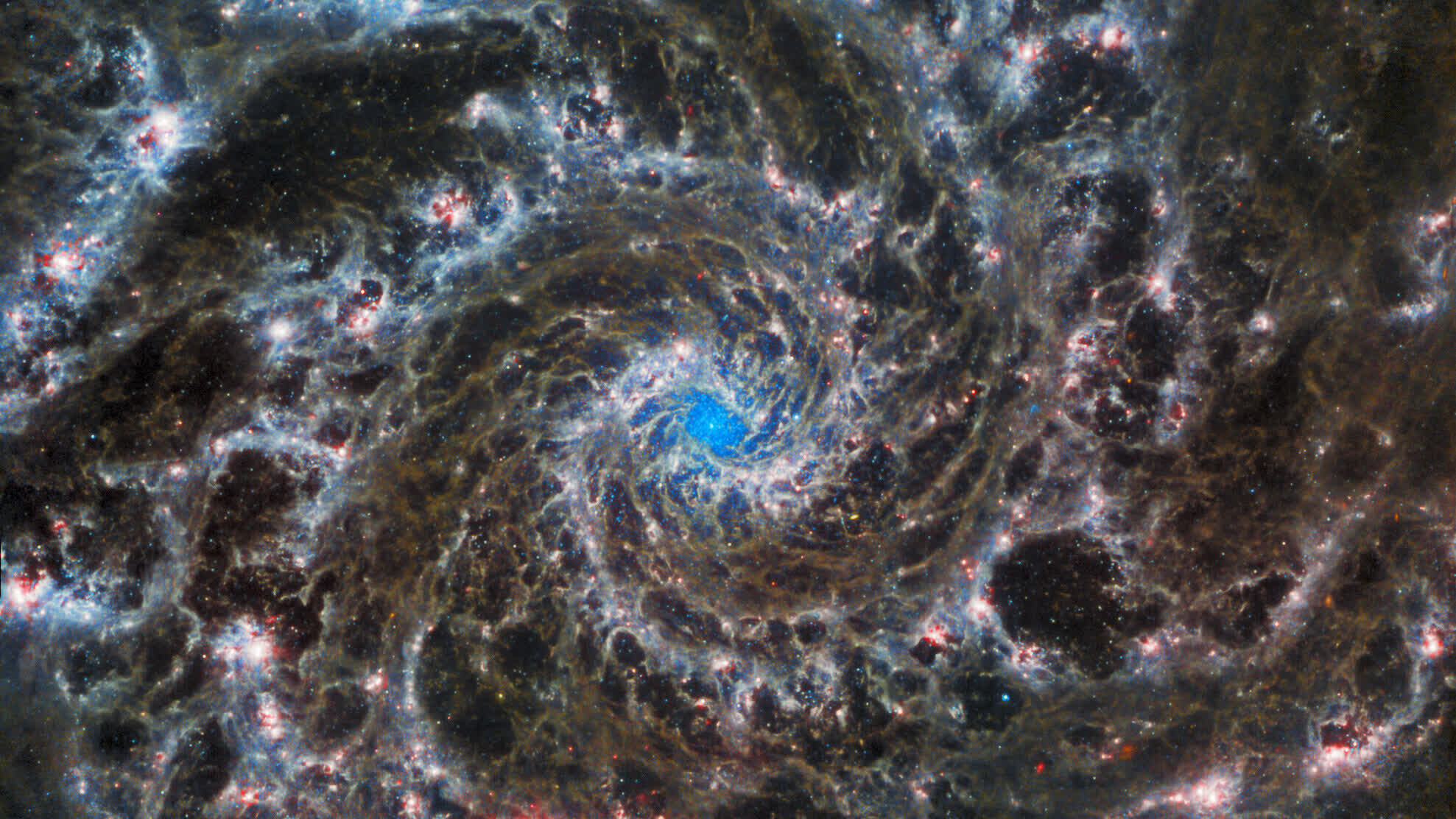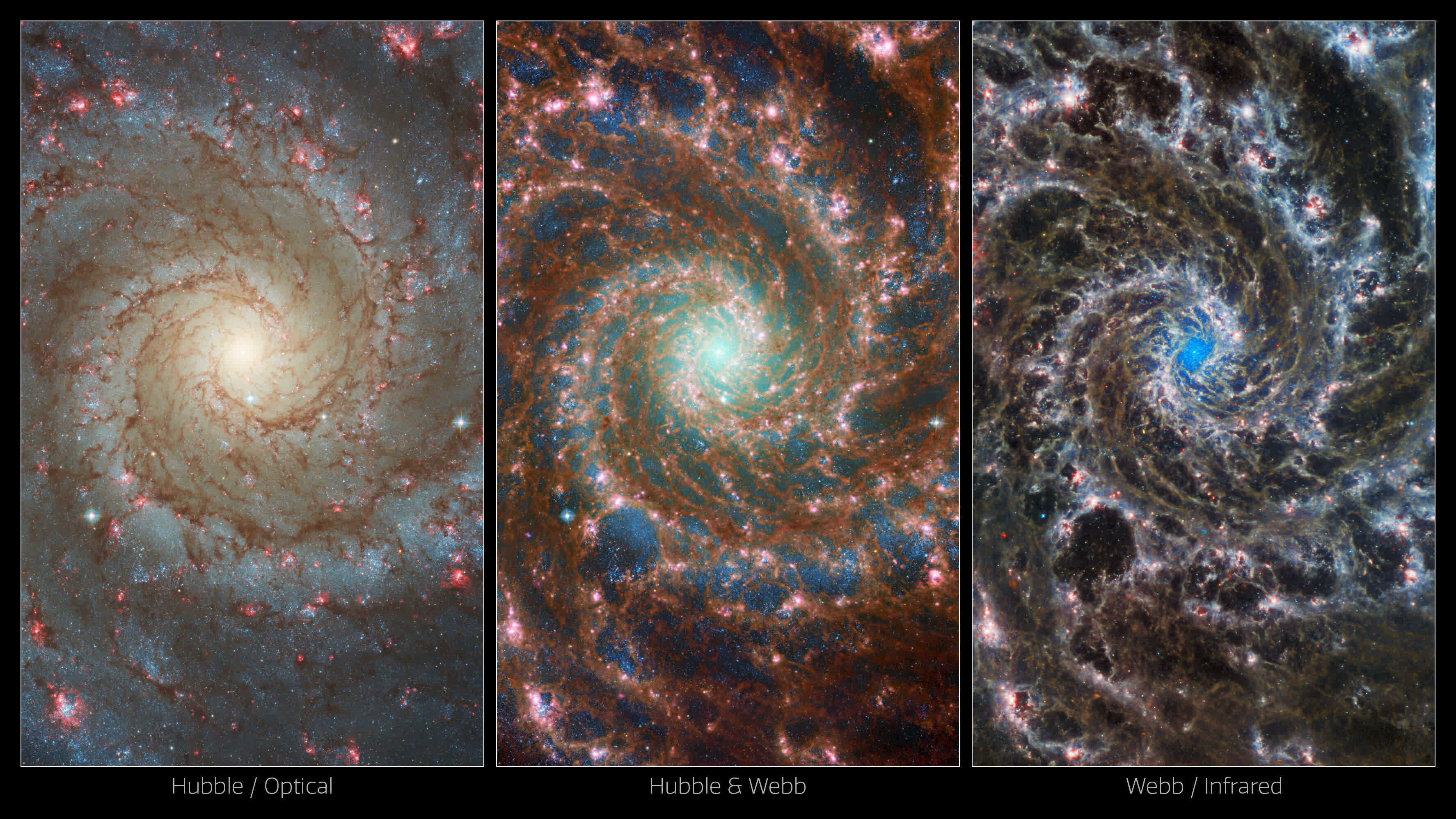In brief: The European Space Agency has demonstrated what's possible when combining observations from multiple space telescopes across varying wavelengths. The results are breathtaking.
In the photo above, the ESA combined data from the James Webb telescope and the Hubble telescope to provide a comprehensive illustration of Messier 74. This large spiral galaxy, more commonly known as the Phantom Galaxy, is about 32 million light-years from Earth in the equatorial constellation Pisces and was first discovered by Pierre Méchain in 1780. It measures 95,000 light-years in diameter and is estimated to host around 100 billion stars.
The red coloring represents dust with the lighter orange colors being reserved for hotter dust. The nuclear core and young stars are shown in blue and older, heavier stars are green and cyan. Pink spots are indicative of star formation. The galaxy's well-defined spiral arms and the fact that it is almost face-on with Earth make it a popular target for astronomers studying galactic spirals.
(Webb's observation of the M74 galaxy using its Mid-Infrared Instrument (MIRI)
Webb observed M74 using its Mid-Infrared Instrument (MIRI), which highlighted gas and dust within the galaxy's arms. It also provided an unobstructed view of the nuclear star cluster at the core of the galaxy. Hubble, meanwhile, captured sharp images at ultraviolet and visible wavelengths using its Advanced Camera for Surveys (ACS).
The ESA said the observations are part of a larger effort to chart 19 star-forming galaxies in the infrared spectrum by the international PHANGS collaboration.
Full-size copies of the images are available to download over on the ESA's website alongside a large version of the comparison photo showing all three photos side by side.
Combining data from telescopes across the electromagnetic spectrum not only looks awesome, but will help scientists better understand these astronomical wonders. Webb's observations specifically will help pinpoint star-forming regions and more accurately measure the ages and masses of star clusters as well as provide insights into the structure of small grains of dust in interstellar space.
https://www.techspot.com/news/95814-webb-hubble-team-up-multi-spectrum-image-phantom.html


